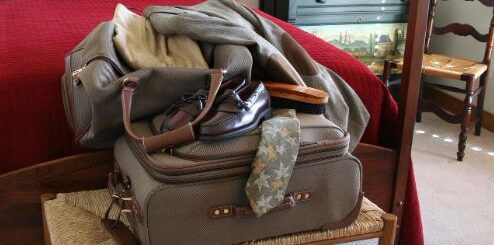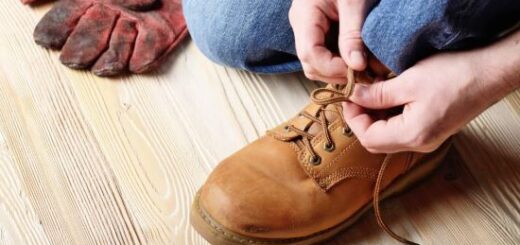Smart Tricks to Make Oversized Shoes Fit Better
Buying a new pair of shoes only to find they’re too big can be incredibly frustrating. Not only do loose-fitting shoes make walking uncomfortable, but they can also lead to blisters, sore feet, and even potential injuries. While returning the shoes is sometimes an option, that’s not always the case—especially with sales, gifts, or discontinued styles. The good news? There are practical ways to make slightly oversized shoes fit much better. This guide offers ten practical solutions that you can try at home to improve the fit of your shoes and walk with confidence.
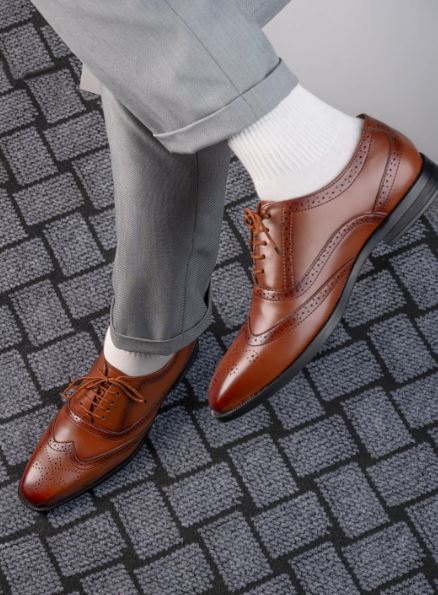
1. Thicker Socks Can Help Fill Extra Space
One of the easiest and most immediate fixes for loose shoes is to wear thicker socks. By adding extra bulk to your feet, you naturally reduce the space inside the shoe. This is particularly useful for sneakers, boots, and other closed shoes. If one pair of socks isn’t enough, you can even layer two pairs. The trick is to use materials that won’t bunch up or cause friction inside the shoe.
This method is great for cooler weather when wearing thicker socks feels natural, but it might not be the best option for warmer climates or open footwear.
2. Stuff the Toes with Soft Material
If the shoe feels too long, stuffing the toe area can be a quick and temporary solution. You can use materials like tissue paper, cotton balls, or even soft fabric. Carefully push the material into the toe box until the fit feels snug but not cramped.
This technique is particularly useful for formal shoes, ballet flats, or any closed-toe shoes where toe space makes the shoes feel too loose. Just be mindful to avoid overfilling, as this can cause discomfort during long periods of wear.

3. Add Extra Insoles for a Tighter Fit
Insoles aren’t just for arch support—they can also be used to occupy space inside the shoe. Adding a second insole on top of the existing one can significantly improve the fit of slightly oversized shoes. Opt for slim, low-profile insoles so you don’t overcrowd the interior, which could lead to discomfort.
There are different types of insoles available, including gel, foam, and memory foam. Choose the one that offers both comfort and a tighter fit. You can also experiment with insoles that are designed for specific shoe types, like running shoes or dress shoes.
4. Use Cushioned Inserts and Foot Pads
Another practical way to reduce interior space is to use cushioned inserts like metatarsal pads, ball-of-foot cushions, or arch supports. These pads not only improve the fit but can also increase comfort, especially for people who are on their feet all day.
These products are widely available in pharmacies and shoe stores and are easy to apply. Some come with adhesive backing to stay in place, while others can be repositioned as needed. Place them strategically where your feet need support and where the shoe feels too roomy.
5. Stick Heel Grips to Prevent Slipping
If your heel keeps slipping out when you walk, heel grips can solve that issue. These padded strips stick to the back of the shoe’s heel area, providing friction and reducing excess space. Heel grips are particularly useful for dress shoes and flats, where loose heels can cause blisters or disrupt your stride.
Made from foam, gel, or suede, heel grips are discreet and often barely noticeable when worn. You can find them in different sizes and materials, so you’ll have options depending on your shoe type and comfort preferences.

6. Try the Water-Shrink Technique for Leather Shoes
If your oversized shoes are made of genuine leather or suede, you might be able to shrink them slightly using water. Lightly mist the shoes with water (don’t soak them) and then wear them as they dry. This helps the material mold to your feet and contract slightly, creating a more customized fit.
This method should be approached with care. Make sure to test a small hidden area first to ensure the water won’t discolor or damage the leather. You can also use a shoe stretcher afterward if the fit becomes too snug.
7. Exchange for the Right Size When Possible
If your shoes are new and still eligible for return, the most reliable solution is to exchange them for a better-fitting pair. Whether purchased online or in-store, most retailers have a return policy that allows for size exchanges. This is particularly important for athletic shoes, where a precise fit is necessary for performance and injury prevention.
If you can’t exchange them, consider donating the pair and investing in shoes that match your size more closely. Your foot health is worth the effort.
8. Modify the Fit with an Elastic Band
An unconventional but creative approach to reducing shoe size involves sewing an elastic band inside the heel. This trick is particularly effective for canvas shoes or fabric-based footwear. By adding a stretchable band across the heel’s interior, the shoe hugs your foot more closely.
This is a DIY solution that requires some basic sewing skills. While it may not be ideal for all shoes, it can work wonders on casual or flexible pairs where structure can be easily adjusted.
9. Visit a Professional Shoe Repair Service
If the shoes are significantly too large or expensive to discard, take them to a professional cobbler. A skilled shoe repair technician can make adjustments that are nearly impossible to replicate at home. From altering the structure to adding padding or liners, a cobbler can often make even the most ill-fitting shoes wearable again.
This service might cost more than DIY fixes, but it’s a worthwhile investment for high-quality or beloved footwear. Plus, a cobbler can recommend the best adjustments based on your shoe type and material.
10. Use Orthotics Designed for Volume Reduction
Orthotics are often associated with medical foot conditions, but they can also be used to improve shoe fit. Full-length orthotics take up more space inside the shoe, reducing looseness while providing added support and comfort.
Orthotics come in various lengths and shapes. If space is tight around the toe area, opt for three-quarter orthotics that support only the arch and heel. For dress shoes, look for thin, low-profile models designed specifically to fit in tighter spaces. Some orthotics are also designed to help with alignment or flat feet, offering dual benefits.
Customizing the Fit with Orthotic Inserts
If you’re planning to use orthotics to adjust shoe fit, make sure the size and design match your feet. Ill-fitting orthotics can create new pressure points and worsen foot pain. To add more volume inside the shoe, place a thin insole over the orthotic. This double-layer system helps fill the extra space while still supporting your arch and heel.
You can also try different lacing techniques if the shoes have laces. Methods like the runner’s loop or heel-lock lacing pattern help secure the heel and prevent slipping inside the shoe. Combining orthotics with smart lacing can significantly improve overall comfort.
Ask for Help at a Shoe Repair Shop
Sometimes, no amount of DIY tweaking will yield the desired results. If you’ve tried several techniques and your shoes still don’t fit properly, take them to a local shoe repair shop. Professionals have tools and materials like spacers, foam fillers, or heat-molding equipment to adjust shoe size more effectively. A skilled cobbler can also suggest modifications based on the material and construction of the shoes.
What About Shoes That Are Too Big?
When considering whether to keep oversized shoes, always weigh the pros and cons. If they’re only slightly large, many of the tricks listed above can help make them wearable. However, if the shoes are excessively big, they may never offer the support your feet need, which could lead to long-term discomfort or injury.
Footwear should always support your body and provide stability. If the shoes slip off or require constant adjustment, they may not be worth keeping. Ultimately, your comfort and safety should guide your decision.
Different Types of Orthotics and Their Benefits
Orthotics aren’t one-size-fits-all. Here are some common types and their benefits:
- Full-Length Orthotics: These run from the heel to the toes and are ideal for athletic or casual shoes where full-foot support is needed.
- Dress Shoe Orthotics: These are thinner and narrower, designed to fit in formal footwear without compromising the shoe’s appearance.
- Three-Quarter Orthotics: Perfect for people needing arch and heel support without taking up too much room near the toes.
Each type has its own purpose, so it’s important to choose based on your specific needs and shoe type.
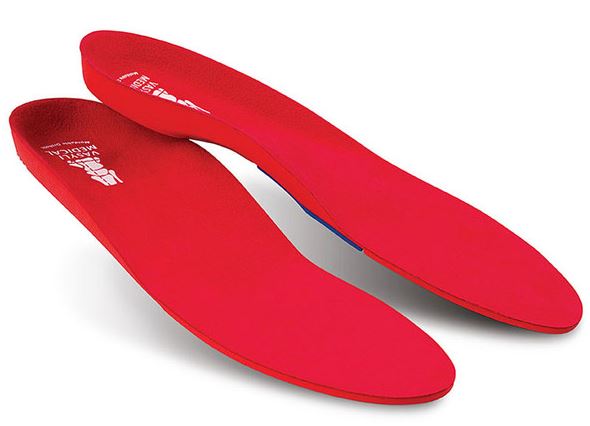
Stretch Your Shoes Before Use
Before wearing new shoes, especially ones that feel tight in some places and loose in others, wear them around the house for a few hours each day. This helps soften the materials and allows them to conform to the shape of your feet. It’s a helpful way to naturally break in shoes before relying on additional hacks or accessories.
Final Thoughts
Oversized shoes can be annoying, but there are plenty of ways to make them fit better. From using thick socks and tissue stuffing to trying insoles, orthotics, and heel grips, most people can find a combination of methods that works for them. Leather shoes can even be slightly shrunk with water, while casual shoes may benefit from internal elastic adjustments. If these tips don’t do the trick, a cobbler can always help fine-tune the fit.
Never ignore discomfort just because the shoes look good. Your feet deserve both style and support, so take the time to adjust your shoes properly or replace them when needed.
FAQs
Can oversized shoes be fixed without professional help?
Yes, many home remedies like using thicker socks, insoles, tissue stuffing, or heel grips can make slightly oversized shoes fit better without needing a cobbler.
What materials can I use to fill the toe box?
Soft items such as tissue paper, cotton balls, or fabric scraps work well for filling the front of the shoe and preventing your feet from sliding forward.
Are insoles effective for reducing shoe size?
Insoles can be very effective. Adding a second insole or using full-length orthotics helps fill excess space while improving support and comfort.
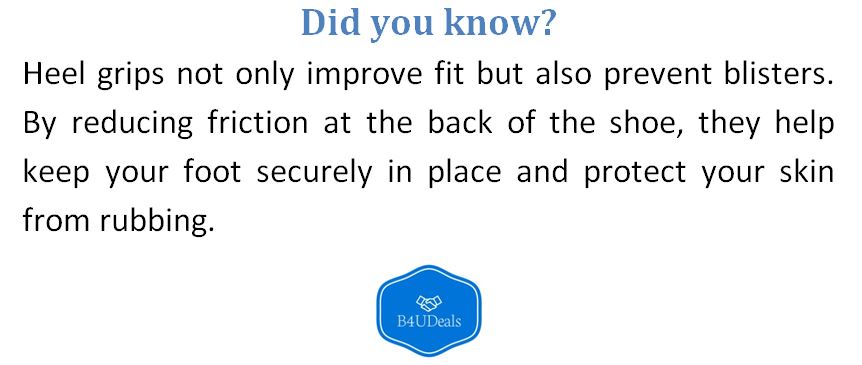
Is it safe to shrink leather shoes with water?
Lightly misting and wearing leather shoes as they dry can help shrink them slightly. Always test on a small area first to avoid damaging the material.
What are heel grips used for?
Heel grips are used to prevent your foot from slipping out of the back of the shoe. They add padding and reduce interior space in the heel area.
Can I combine multiple shoe-fitting hacks at once?
Yes, combining methods like using an insole with heel grips or thick socks can improve fit further. Just ensure you don’t overcrowd the shoe and cause discomfort.
When should I consider seeing a cobbler?
If the shoes are very loose, valuable, or made of complex materials, a professional cobbler can safely adjust the size and fit more accurately than DIY methods.
Are orthotics only for medical use?
Not at all. Orthotics are also great for improving shoe fit and comfort, especially full-length or 3/4 versions that reduce extra space inside shoes.

